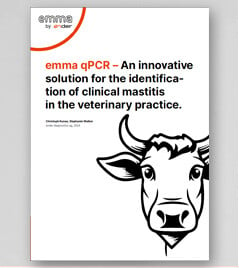Mastitis: Empowering Vets with Rapid Diagnostics
Get Results in Just 90 Minutes!
Rapid Diagnosis
90-Minute test for clinical mastitis pathogen identification
Sustainable Care
Smart reduction of antibiotic usage
Data-Driven Clinical Mastitis Care
Treat clinical mastitis based on evidence
User-Friendly Workflow
Easy to learn for everyone
Enhanced Safety
No pathogen enrichement required
15 minutes for sample preparation; the measurement is fully automated
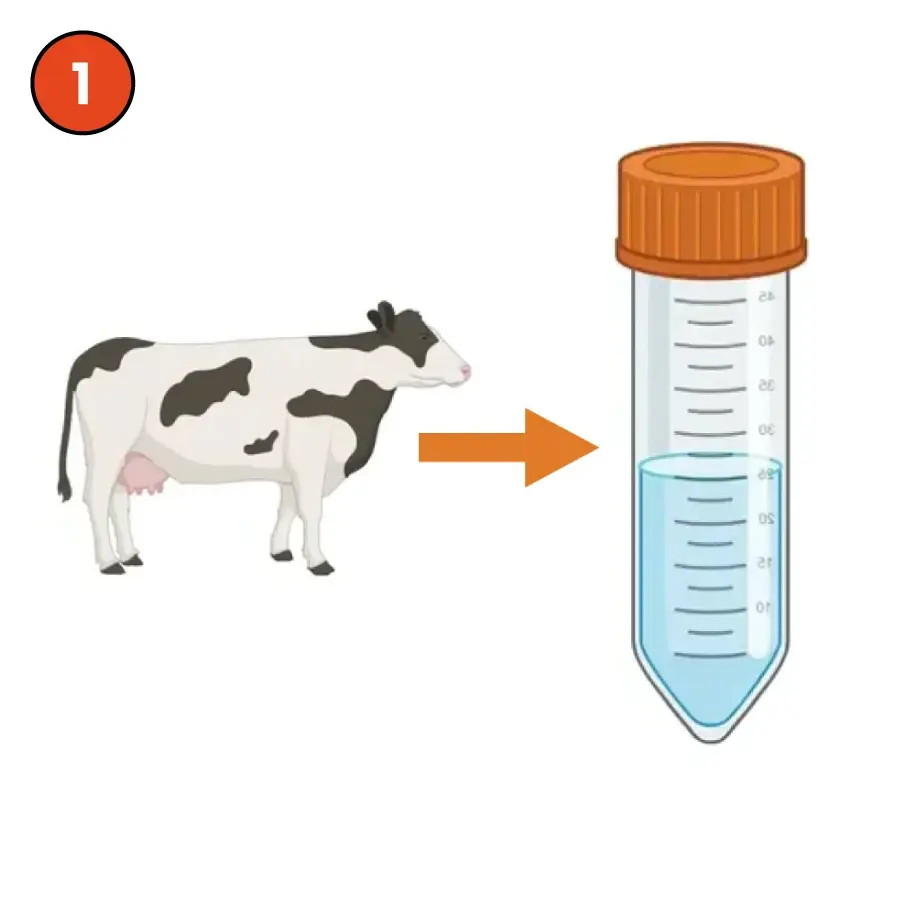
Collect ~0.5 ml milk sample

Homogenize at 4350xg for 40 seconds.
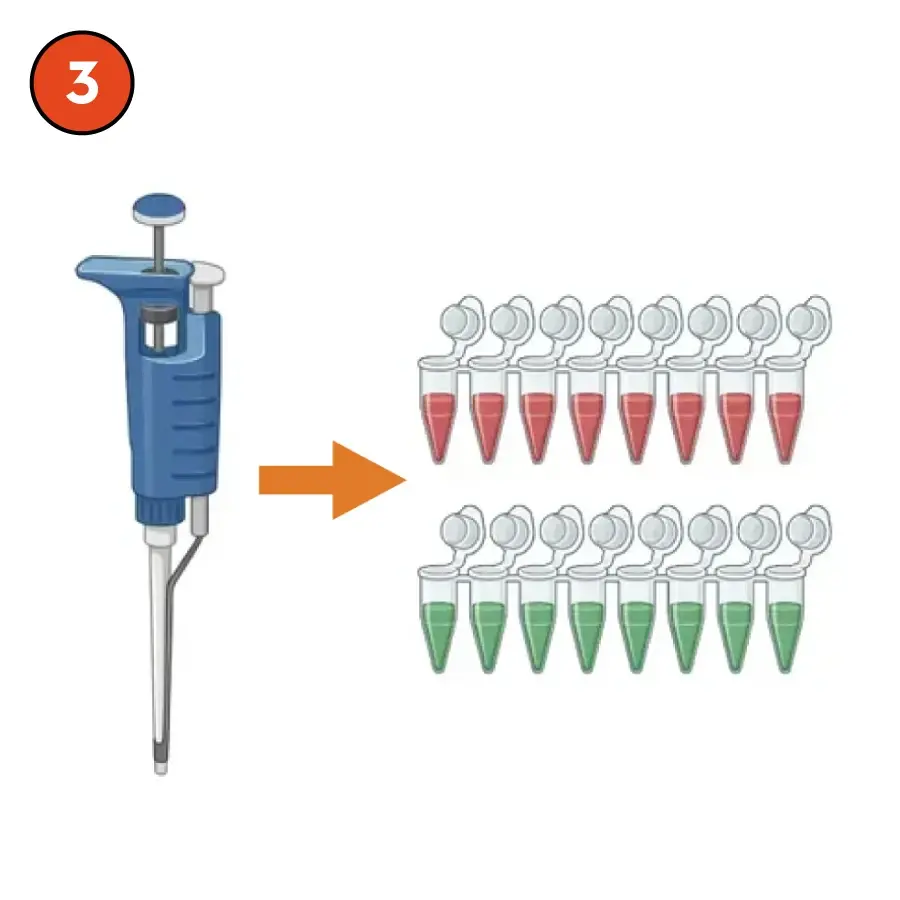
Add 10 µl sample to PCR tubes.
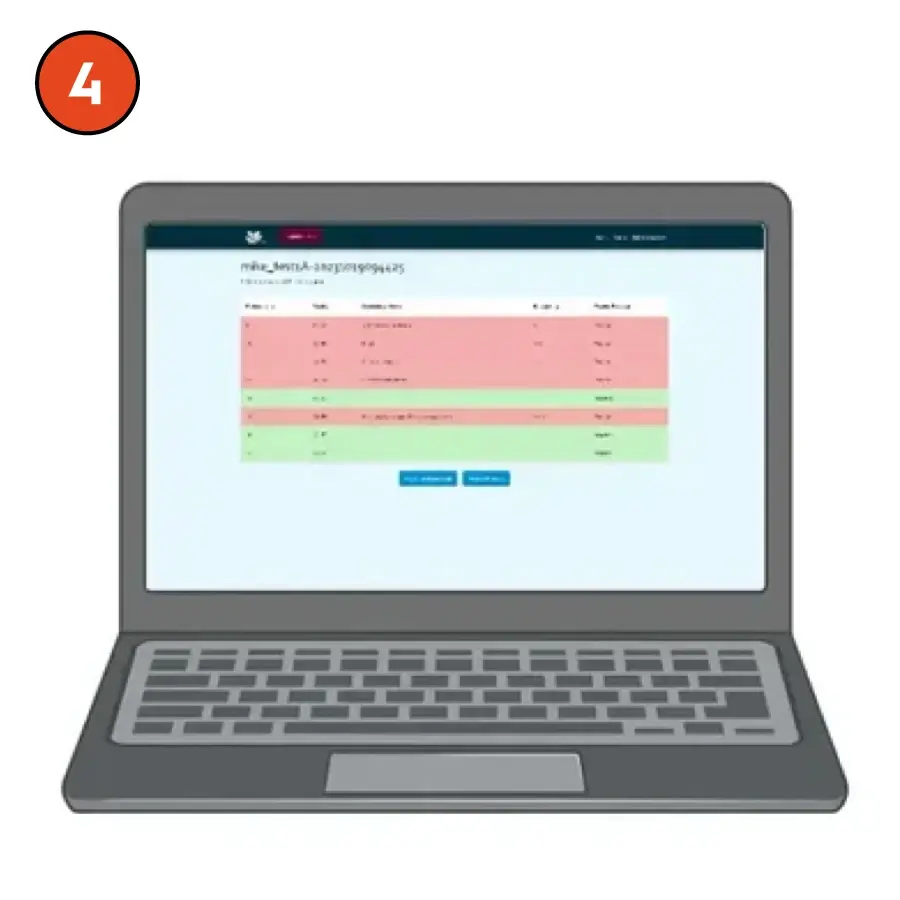
Run PCR and analyze results.
-
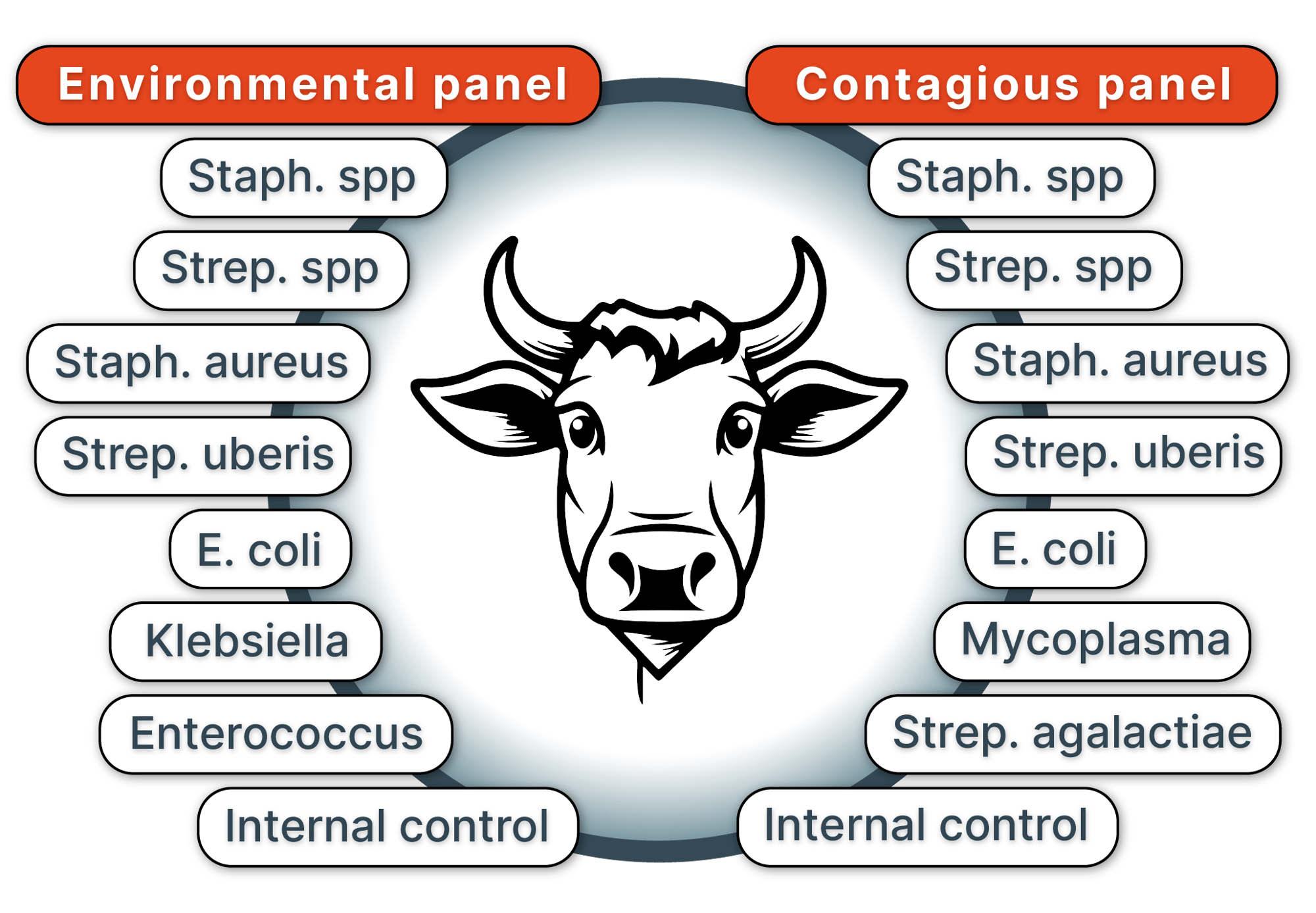
Target Pathogens
Quick, sensitive, and semi-quantitative differentiation and identification of these pathogens gives the veterinarian the ability to make evidence-based therapy decisions:
No antibiotics where not necessary
The right agents, depending on the pathogen
Rapid diagnostics and targeted therapy = fewer antibiotics
emmaverse
Instant Access to Results
The emma portal provides veterinarians with quick and secure access to test results, empowering them to make timely, evidence-based decisions for mastitis treatment:
- Immediate access to detailed pathogen profiles
- Streamlined decision-making for appropriate treatments
- Enhanced efficiency in reducing unnecessary antibiotic use

.webp)
.
.
emma,
delivers results within 90 Minutes (PCR technology)
does not require enrichment of potentially pathogenic samples (work safety, regulations)
detects mycoplasma
provides clear results, no matter who performs the test (automatic evaluation)
is quick and easy to learn
finds exactly what is being searched for (no overgrowth by other pathogens)
also detects pathogens in pre-treated samples (e.g., by antibiotics / stabilizer)
analyzes up to 8 samples simultaneously
always includes an internal control to ensure the result is reliable
detects 7 pathogens in parallel
rapid evidence-based treatment decisions
emma components



Fix-Volume-Pipette


Cooling-Block

Pipette tips





emma at EuroTier 2024
The EuroTier in Hanover is the leading international trade fair for professional animal farming and livestock management. There, we had the chance to present our products.
emma at other trade fairs
Appearances in 2024.







emma at EuroTier 2024
The EuroTier in Hanover is the leading international trade fair for professional animal farming and livestock management. There, we had the chance to present our products.
emma at NMC 2024
National Mastitis Council (NMC) 2024 in Gent, Belgium. This event offers veterinarians and industry professionals the chance to explore emma —a tool designed for rapid, evidence-based mastitis treatment, reducing antibiotic use.
“Emma's rapid PCR technology has been a game-changer for us. Being able to diagnose clinical mastitis with precision in just 90 minutes allows us to make evidence-based decisions that are both effective and economically beneficial. ”
Green Pastures Farm
Dr. Sarah Thompson
Documents
Download our white paper to discover how emma qPCR revolutionizes clinical mastitis detection
Explore the innovative emma qPCR system for rapid and precise pathogen identification in veterinary practices.
Some of our amazing clients


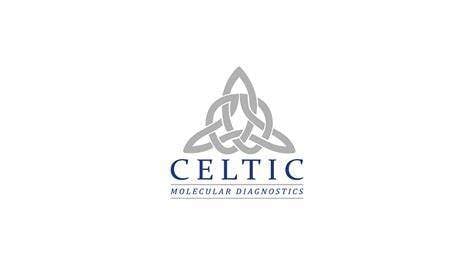

FAQ
What is emma PCR?
The emma PCR (ender molecular multiplex approach) is an innovative diagnostic test designed to rapidly identify and differentiate mastitis pathogens in dairy cows using PCR technology. It is developed by ender diagnostics in Switzerland and can be used directly in veterinary practices.
How does emma PCR work?
emma PCR uses real-time PCR technology to detect specific mastitis pathogens within 90 minutes. The process involves sample preparation, PCR amplification, and automated analysis, all conducted in a veterinary practice setting.
What pathogens can emma PCR detect?
emma PCR is capable of detecting a wide range of pathogens, including:
-
Contagious Panel:
- Staphylococcus spp.
- Staphylococcus aureus
- Streptococcus spp.
- Streptococcus uberis
- Streptococcus agalactiae
- Mycoplasma spp.
- E. coli
- Internal control
-
Environmental Panel:
- Staphylococcus spp.
- Staphylococcus aureus
- Streptococcus spp.
- Streptococcus uberis
- Enterococcus spp.
- Klebsiella spp.
- E. coli
- Internal control
What are the main benefits of using emma PCR?
- Rapid Results: Provides results in just 90 minutes.
- Accurate Diagnostics: Enables evidence-based treatment decisions.
- Reduced Antibiotic Use: Helps reduce unnecessary antibiotic use by up to 40%.
- Economic Advantage: Generates additional revenue for veterinary practices by allowing direct billing for tests.
- User-Friendly: Requires minimal training and no specialized laboratory skills.
How does emma PCR improve treatment outcomes for clinical mastitis?
By providing rapid and precise pathogen identification, emma PCR allows veterinarians to make informed treatment decisions, selecting appropriate antibiotics or opting out of antibiotic use when unnecessary. This targeted approach improves treatment outcomes and reduces the risk of antibiotic resistance.
How is the emma PCR test conducted?
The test involves the following steps:
- Sample Collection: Collect a milk sample from the cow.
- Sample Preparation: Use the provided lysis tube and homogenize the sample.
- PCR Amplification: Run the PCR process with the selected panel (contagious or environmental).
- Automated Analysis: Results are automatically analyzed through a web-based system.
Does emma PCR require any special training?
emma PCR is designed to be user-friendly and can be easily learned with minimal training. Ender diagnostics provides comprehensive training to ensure veterinarians and staff can efficiently conduct the test.
How does emma PCR compare to traditional microbiology tests?
Speed: emma PCR provides results in 90 minutes, whereas traditional microbiology can take up to 72 hours.
Pathogen Detection: emma PCR detects a broader range of pathogens, including Mycoplasma spp., which are often missed by traditional methods.
No Culture Required: emma PCR does not require pathogen culture, reducing safety risks and time delays.
Can emma PCR detect antibiotic resistance?
No, emma PCR does not detect antibiotic resistance or resistance genes. It focuses on rapid pathogen identification to facilitate evidence-based treatment. For resistance monitoring, regular microbiological testing is recommended.
How does emma PCR benefit veterinary practices financially?
By conducting tests in-house, veterinary practices can generate additional revenue through direct billing. The rapid turnaround time also enhances service quality and client satisfaction.
Is emma PCR cost-effective compared to other diagnostic methods?
Yes, emma PCR is cost-effective due to its rapid results, reduced antibiotic usage, and ability to keep testing revenue within the practice. It offers a competitive advantage over slower, traditional testing methods.
What support does ender diagnostics provide for emma PCR users?
Ender diagnostics offers comprehensive training and support, including installation guidance, user training, and technical assistance to ensure seamless integration into veterinary practices.
Can emma PCR be used in any veterinary practice?
Yes, emma PCR is designed for use in various veterinary settings, from large animal practices to smaller clinics, without requiring specialized laboratory infrastructure.
How much hands-on time is required for testing?
The emma qPCR system requires approximately 15 minutes of hands-on time for preparation of 8 samples. The rest of the analysis is automated, with pathogen identification being completed within 55 minutes through a web-based evaluation.
How can I learn more about emma PCR or request a demonstration?
For more information, demonstrations, or to request training, please contact ender diagnostics at:
Or simply set a meeting with us:
emmaverse services and products
 emma platform
emma platform
A rapid test that checks the microbiological quality of the milk in minutes and detects common mastitis pathogens. This means you can often rule out mastitis or use antibiotics in a targeted manner.
 Microbiology Lab
Microbiology Lab
If necessary, enhances the results of emma and offers comprehensive microbiological analyses. This gives you even more precise information about the bacteria in the milk and allows you to determine the definitive treatment plan.
 HygieneGuard ATP
HygieneGuard ATP
Checks the cleanliness of the barn and the milking process. With this guard, you can identify weak points in hygiene and eliminate sources of contamination.
emmaverse services and products
 emma platform
emma platform
Microbiology Lab
 HygieneGuard ATP
HygieneGuard ATP

